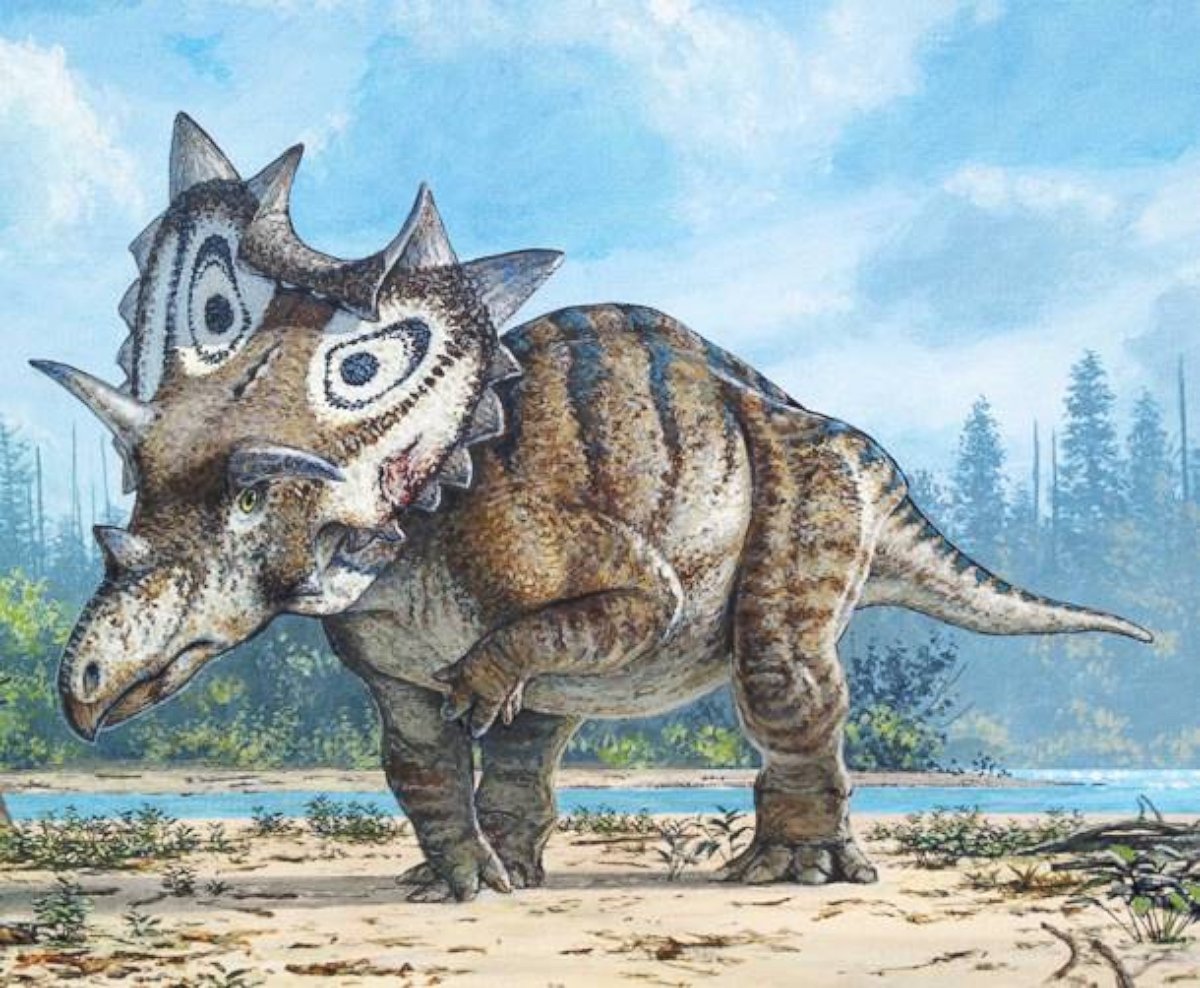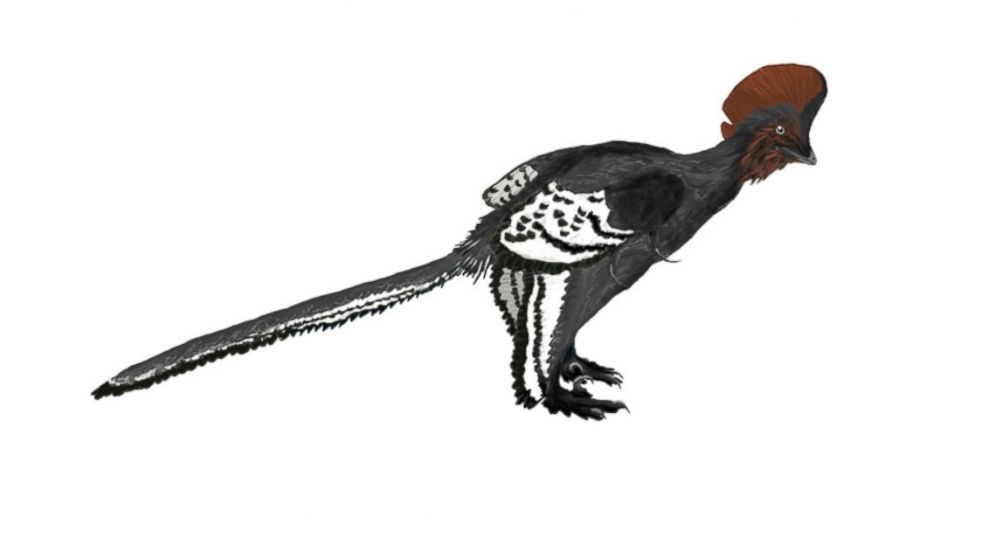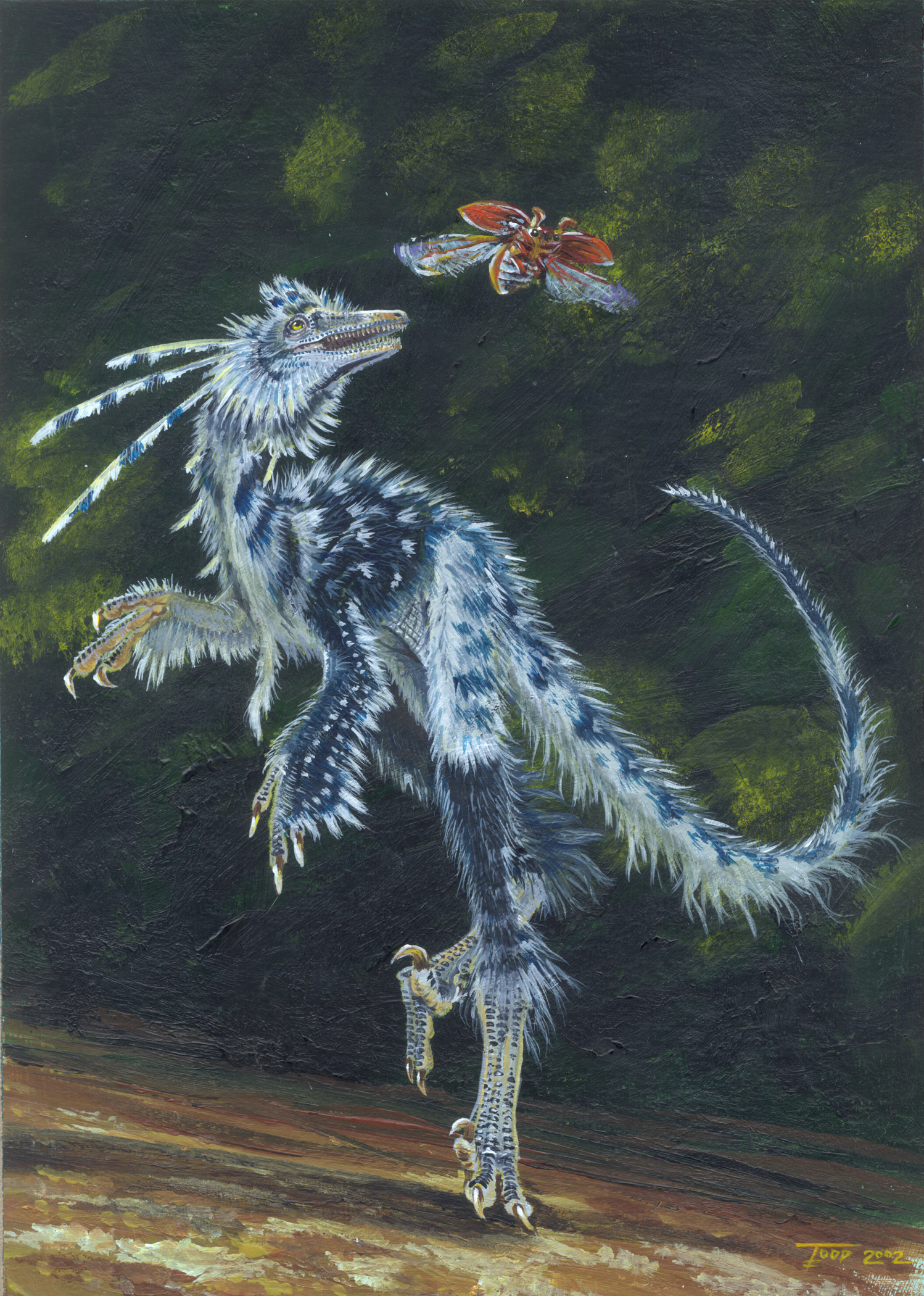The Art of Deciding What Color Dinosaurs Are Is Part Paleontology, Part Palette-ontology
Who decides what color dinosaurs are? It's more art than science in many cases.

— -- Michael Skrepnick isn’t a paleontologist, but he may have done more to influence your notion of what dinosaurs look like than most paleontologists.
Skrepnick is a paleoartist. For over 25 years, he's acted as the eyes of scientists -- bringing to life prehistoric worlds and creatures that arguably have never been seen by humans.
Most recently, Skrepnick produced the first artist's rendering of Spiclypeus shipporum, a newly discovered dinosaur species that resembles a triceratops.
Fun fact: The dinosaur was nicknamed "Judith" after the Judith River Formation in Montana, where the fossil was found. Coincidentally, Judith is also the name of Skrepnick's wife, part of why the project was particularly special for him.
In Skrepnick's acrylic painting, the horned dino is depicted as having a greenish-brown body with a whitish underbelly, black stripes across its back and black-and-white circular patterns on its frills.

But the reality is that the color and patterns on Spiclypeus shipporum -- and most other known dinosaurs, for that matter -- remain a mystery and a subject of much debate.
What Scientists Know About Colors in Dinosaurs
For centuries, the only evidence of dinosaurs was fossilized bone with no soft tissue preservation, according to Dr. Hans-Dieter Sues, chair of paleobiology for the Smithsonian Institute's National Museum of Natural History.
It was only in the late '90s that scientists discovered feathered fossils, including some that preserved soft tissue with melanosomes, Sues told ABC News. He explained that melanosomes were responsible for the coloration in the feathers. Looking at the density of melanosomes in a particular area, scientists could determine hues of brown, black, red and white.

In 2010, scientists announced that Anchiornis huxleyi was the first dinosaur species for which the coloration of nearly its whole body was determined.
The dinosaur was found to be primarily covered in grey and black feathers with white tips on the wings, tail and feet, Sues explained. The roadrunner-like dino also had a brownish red crest, likely used for attracting mates, he added.
And while the colors of some other feathered dinosaurs have been determined, such as the iridescently colored black microraptor, the colors of the vast majority of other known dinosaurs are still unknown -- especially those believed to be without feathers or with less of them, Sues said.
That's where paleoartists step in and exercise a little creative license.
Artistic License
"Being artists, they can let their imaginations wander and then come up with something," Sues said. "The colors you see on T. Rex in books and movies? That's all creative license. We really don't know what color T. Rex was."
Sues added that the colors that an artist will choose often heavily depend on the context of the work.

If artists are illustrating for a children's book, film or cartoon, they tend to choose colder and brighter colors. But say if they're creating images to accompany a scientific paper, they'll likely stick to "a more conservative palette" -- which typically also has to be approved by the scientists they're working with.
Smithsonian paleoartist Mary Parrish, who has worked with Sues, told ABC News that while working on a mural for the temporary exhibit "The Last American Dinosaurs," she chose to use mostly earth tones.
But when she was asked to add in newly discovered dinosaur last minute, she "went all the way in the other direction," she said.
Most of the scientists who examined the mural loved the pink dinosaur except for one, Parrish said. "He told me, 'Pink dinosaurs? Really? So I went online and found that there are pink and purple lizards that are indeed brightly colored, and I got to keep it in the mural."
How Size Affects a Dino's Color Scheme
Like Parrish, multiple other paleoartists told ABC News that they relied on modern animals, such as birds or lizards for coloration inspiration. All of them also mentioned they took into account the dinosaurs' estimated size, habits and environment to make educated guesses about dinos' colors.
Larger dinosaurs like T. Rex were likely darker, while smaller dinosaurs were more colorful, according to Skrepnick, Sues and Parrish. They all told ABC News that this popular idea stems from coloration tendencies in modern animals.

Larger predator animals tend to be darker colored, though some also have brightly colored patterns to help break their bodies up in the environment they're in. Such is the case with tigers who have stripes that make it harder for prey to spot them hiding in grasses.
Smaller animals, especially birds, tend to have a wider color variation, and many scientists believe the brighter colors help the smaller species of animals identify each other more easily, in addition to possibly being used to attract mates.
Regardless of size, many dinosaurs' colors were likely influenced by the colors of their surrounding environment, added paleoartist Todd Marshall, who's based in Boise, Idaho. Marshall has created original dinosaur art for natural history museums, scientists and children's book publishers worldwide.
While many larger-sized tyrannosaurs in forest areas were likely darker colored earth tones, tyrannosaur Nanuqsaurus hoglundi (found in Alaska) may have been been "as white as a snow owl," Marshall told ABC News.
Rainbow-Colored Dinos?
Marshall added that perhaps the scientific paleoart community has been too conservative in choosing color schemes for dinosaurs.
"I think that for a long time, the scientific community has stuck to earth tones to play it safe," he explained. "They're trying to be serious about it and to show the public dinosaurs that aren't fantastical dragons from some crazy Hollywood movie, but instead, based on science and contemporary animals that exist in the world today."
"Nature is very amazing and tricky, and there are all sorts of fascinating creatures today that break its rules," Marshall noted. "So, is it possible that there were really bright, colorful dinosaurs? I'd like to think, 'Never say never.'"




